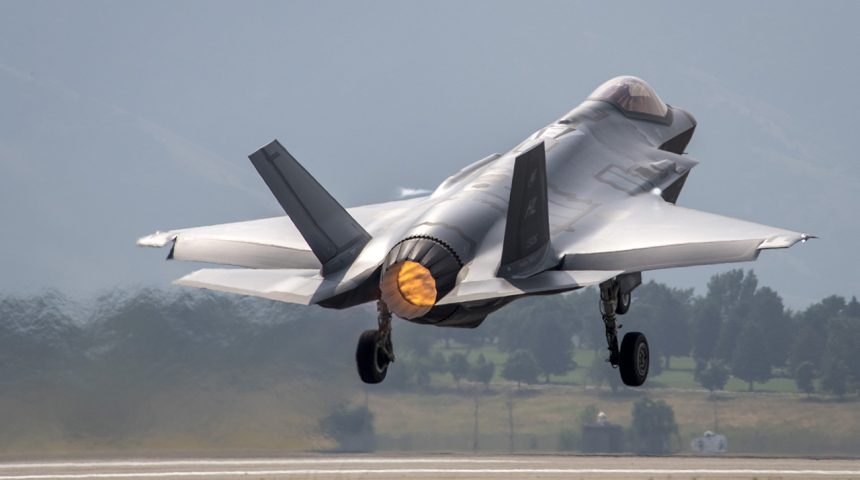The 2021 air show schedule for the Air Force’s F-35A Lightning II Demonstration Team was cut by about one-third because of engine issue.
The F-35 Demo Team will not display the capabilities of the F-35A at all the 22 performances initially schedule between April and December 2021. In fact, the Air Combat Command, had to cut the number of 2021 shows by 8 performances, or about one-third, to ensure the demos don’t aggravate a fleet-wide shortage of engine.
The revised scheduled has not been published on the team’s website and it probably still being discussed. AirshowStuff.com, noticing that the Great Tennessee Airshow in Smyrna recently replaced the F-35 Demo Team with the F-16 Demo Team on their website says it is likely that ACC will work to assign one of their three other demonstration teams – the F-16 Fighting Falcon, F-22 Raptor, and A-10 Thunderbolt II – to shows which fall off of the F-35 schedule.
2021 airshow season will be the team’s third year as an official aerial demonstration team, and the second year operating as part of the 388th Fighter Wing out of Hill AFB, Utah, under Air Combat Command. Since last year, the Demo team is led by Capt. Kristin “BEO” Wolfe who will remain as the team’s demonstration pilot and commander, with the team continuing to practice locally over Hill Air Force Base during the air show “off-season”, from January to March 2021.
But a fewer number of locations will have the possibility to admire the 18-minute long demo, that has been designed and constantly reviewed to highlight the F-35A’s speed, agility, and high-g turning capabilities. Last year, the Demo Team’s schedule had been impacted by the COVID-19 pandemic and the subsequent cancellation of several airshows, even though the team managed to arrange a flight demo that somehow made history for being the first-ever to be streamed live on Facebook.
This year, the problem is not the Coronavirus, though, by the powerful Pratt & Whitney engine.
“The engines on A-model F-35s have been running “hot,” or close to the limits of their design, and that heat has caused premature cracks, or delamination, of turbine blade coatings,” Bloomberg reported on Feb. 10, 2021. “That’s required the engines to be removed or repaired earlier than anticipated, aggravating an already backlogged depot system. The cracks in the coating aren’t a flight safety issue, but they reduce an engine’s useful life, said a defense official.”
“The Pentagon’s F-35 program office has briefed Defense Department acquisition leaders that, in the most extreme case, up to 20% of Air Force F-35s will lack engines by 2025. It’s a number that assumes corrective actions underway will be ineffective, or can’t be executed by the service, program office or Raytheon’s Pratt & Whitney engine unit, according to two defense officials.”
“The Air Force is working “diligently” with the F-35 Joint Program Office and Pratt & Whitney “to resolve supply and maintenance issues” with the engine, according to an Air Combat Command statement. Reducing air show performances will help “ensure the Air Force has enough engine capacity to meet operational requirements,” it added.”
Needless to say, the impact on the frontline squadrons is much more concerning than the cutback in public appearances. But, some “aggressive measures” are being considered to mitigate the issues. These include expanding the F-35 engine repair depot capacity and “concurrently implementing engineering solutions that will keep engines deployed longer before needing maintenance or replacement.” Let’s see…









